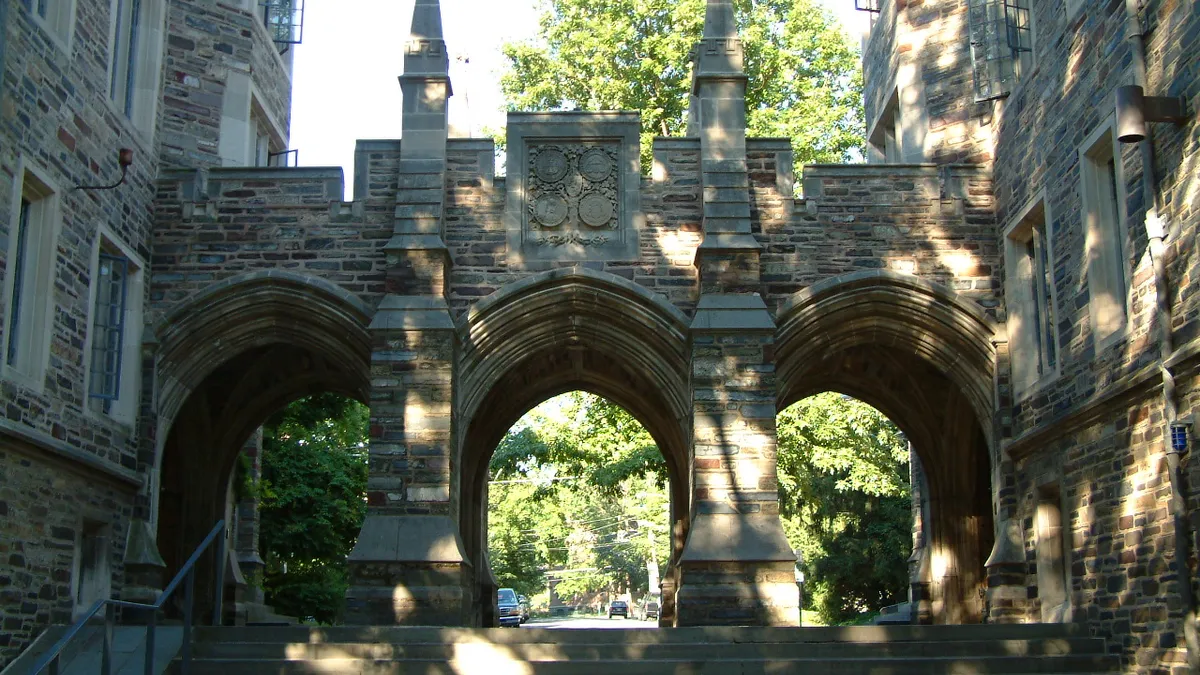Dive Brief:
- Those interested in serving on university boards should recognize the work involved, argues Robert Scott, president emeritus at Adelphi University, in a piece drawn from his book, “How University Boards Work.” Although potential trustees may seek a board role for altruistic reasons, they should also understand it takes energy, imagination and commitment to be effective, and should recognize the challenges of board service and commit to continuous study for their role, he says.
- Boards are most effective when members know the difference between governance for the longer term and management for the near term, Scott writes. The board’s role is to save the school of the future from the decisions of the day, he says, and the most effective board members bring questions, not prescriptions.
- Scott believes college boards should be partners with the institution’s president. He says a strong partnership is essential in developing and achieving goals to fulfill the institutional mission and in monitoring the progress of strategic initiatives.
Dive Insight:
As college costs skyrocket and graduation rates remain low, college boards have moved out of the shadows in recent years to challenge the status quo.
But too often college presidents, overwhelmed by the nature of today’s expectations, express concerns that their board members are less partners than obstacles, according to the Association of Governing Boards of Universities and Colleges. AGB argues that policymakers and the increasingly skeptical public demand presidents be inclusive in addressing today’s difficult challenges. Presidents should involve boards in directions and policies from the start, so that they can later offer full support and help frame bold decisions.
Voluntary boards can’t and shouldn’t try to manage the complex structures and issues of higher education, AGB says, but that does not mean presidents and chancellors should seek to limit board participation in crucial decisions. Instead, they should offer information, data and explanations behind decisions being made in an inclusive way that does not divide boards into factions.
However, as the AGB report points our, "presidents can’t succeed in a vacuum, and visionary leadership requires support as well as a sense of partnership—between the board and the president, and with the participation of faculty members and other key stakeholders—to meet institutional goals." That may be easier said than done. In some cases, boards are made of wealthy donors or alumni who may hesitate to challenge a president. And many public schools are governed by boards made up of trustees appointed by a partisan governor.
Nonetheless, presidents and chancellors must find a way to work with boards, and trustees must be willing to stand up to administration when they feel it necessary. “The reality is that we’ve had boards that have been more ceremonial than not, and played the role of being the overseers and the keepers of the seal,” said Jane Wellman, a higher-ed policy analyst who was an advisor to the National Commission on College and University Governance, in a recent Hechinger Report article.
“College presidents and faculty probably liked it that way, but that’s not the reality now,” she said. “There’s a need for boards to do more than raise money and hire the president, then sit back.”
This is especially crucial today, at a time when 58% of surveyed Americans say colleges and universities put their own interests ahead of students.








